Chrysodeixis chalcites
(Esper, [1789])
-
 Subfamily: Plusiinae, Argyrogrammatini
Subfamily: Plusiinae, Argyrogrammatini -
 Wingspan: 33-44 mm
Wingspan: 33-44 mm -
 Flight period: May - Nov
Flight period: May - Nov -
 Spread: Common
Spread: Common -
 Host plants: Polyphagous
Host plants: Polyphagous
Information
The Chrysodeixis chalcites also called The Tomato Looper or Golden Twin-spot moth is a moth of the Noctuidae family, subfamily Plusiinae,
with wingspan of 33-44 mm.
In Europe it is quite widespread, absent from Ireland, Iceland, Finland, the Baltic countries, Belarus and northern European Russia. *
Its range extends to the Middle East and to northern and tropical Africa. Recently it has also been reported from North America. ****
In Italy it is also present in the islands. *
The front wings of the Chrysodeixis chalcites are reddish brown, two spots of white silver of ovoid shape and of similar size.
The apex is rounded.
The anal area in the disc and post discal region have intense golden shades, almost always delimited externally by a lighter zigzagging line bordered
in brown that starts from the inner edge to end on the costa.
Inside about one third of the wing, another clear line is visible which stops on the discoid cell.
A golden hue is visible near the inner corner.
The hind wings are brownish in color with darker shades from the middle of the wing to the edge and along the joints. The edges of all wings are fringed.
Head, thorax and abdomen are brown / reddish in color with a moderate down.
The Chrysodeixis chalcites is polyvoltine, endemic to southern Europe and a migratory species. ***
The generations 3 and/or 4 are sedentary , this moth flies from April to November, with a greater presence in the period July September.
Predominantly nocturnal, this species can be found in many environments, as it does not have particular ecological requirements.
The eggs are spherical slightly flattened, white, knurled.
The larva is up to 38 mm long, the pale green body with a slight longitudinal stripe on each side, has a green head. **
As for the other Plusiinae , the first two pseudo-legs are absent, for this reason they move arching.
The pupa is greenish in color with black areas that can sometimes completely cover it is located inside a silky cocoon. **
The larvae are polyphagous and feed on Apiaceae such as Apium, Boraginaceae such as Echium, Rosaceae, Solanaceae (tomato) Urtica, Cytisus, Solanum, Parietaria and many others.
* Lepidoptera mundi https://lepidoptera.eu/ - Fauna Europea https://fauna-eu.org/
** Bestimmungshilfe für die in Europa nachgewiesenen Schmetterlingsarten - http://lepiforum.de/
*** Roland Robineau, Guide de papillons nocturne de France, Delachaux et Niestlé, 2011 p. 107
**** Murillo, H.; Hunt, D.W.A.; VanLaerhoven, S.L. (2013). "First records of Chrysodeixis chalcites (Lepidoptera: Noctuidae: Plusiinae) for east-central Canada". The Canadian Entomologist. 145 (3): 338–342.

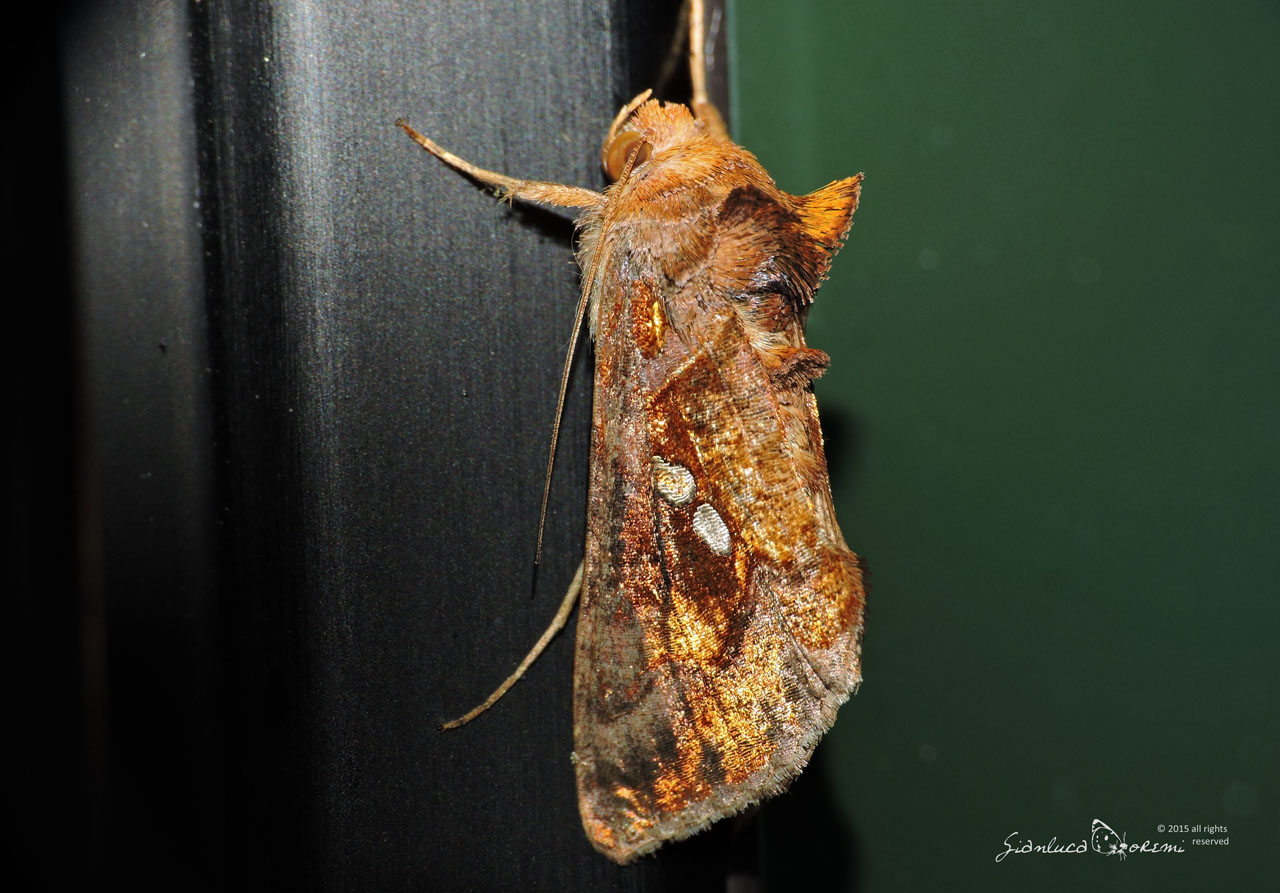
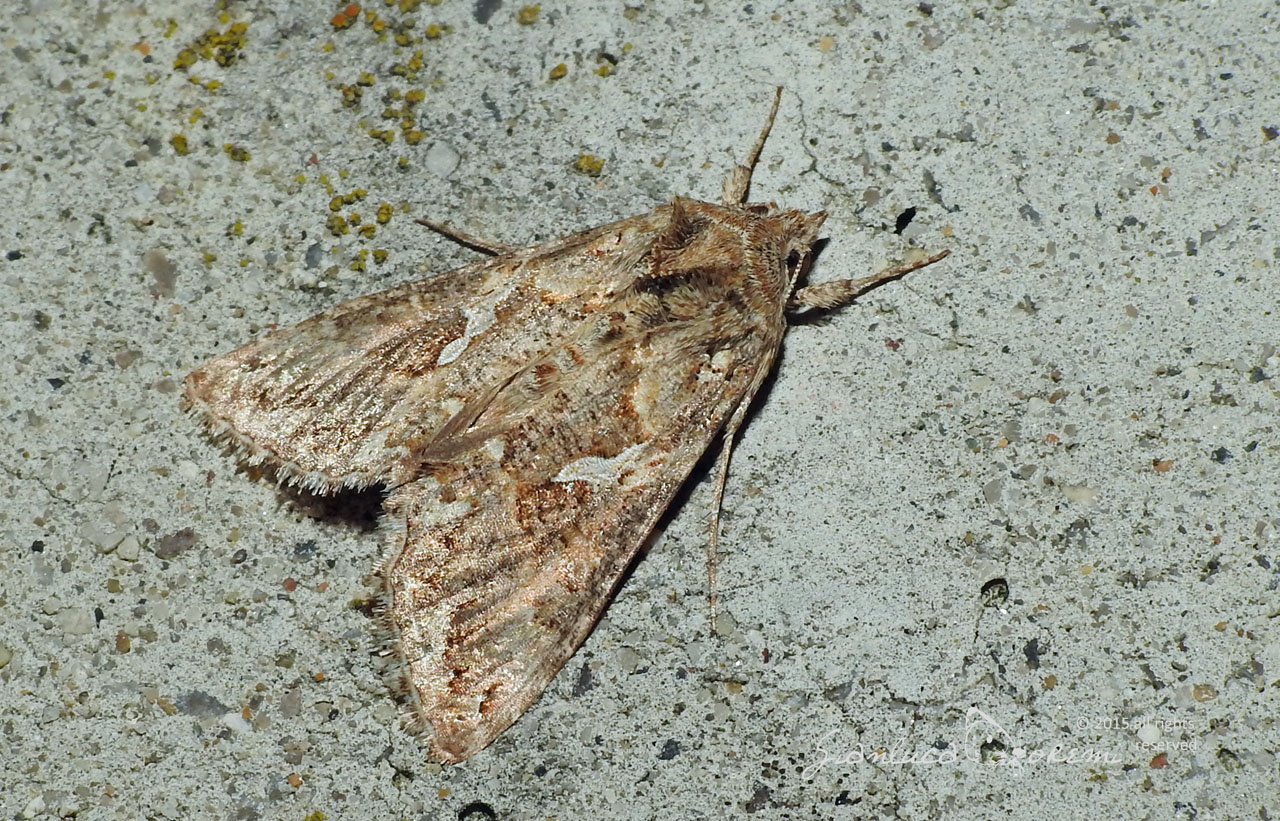
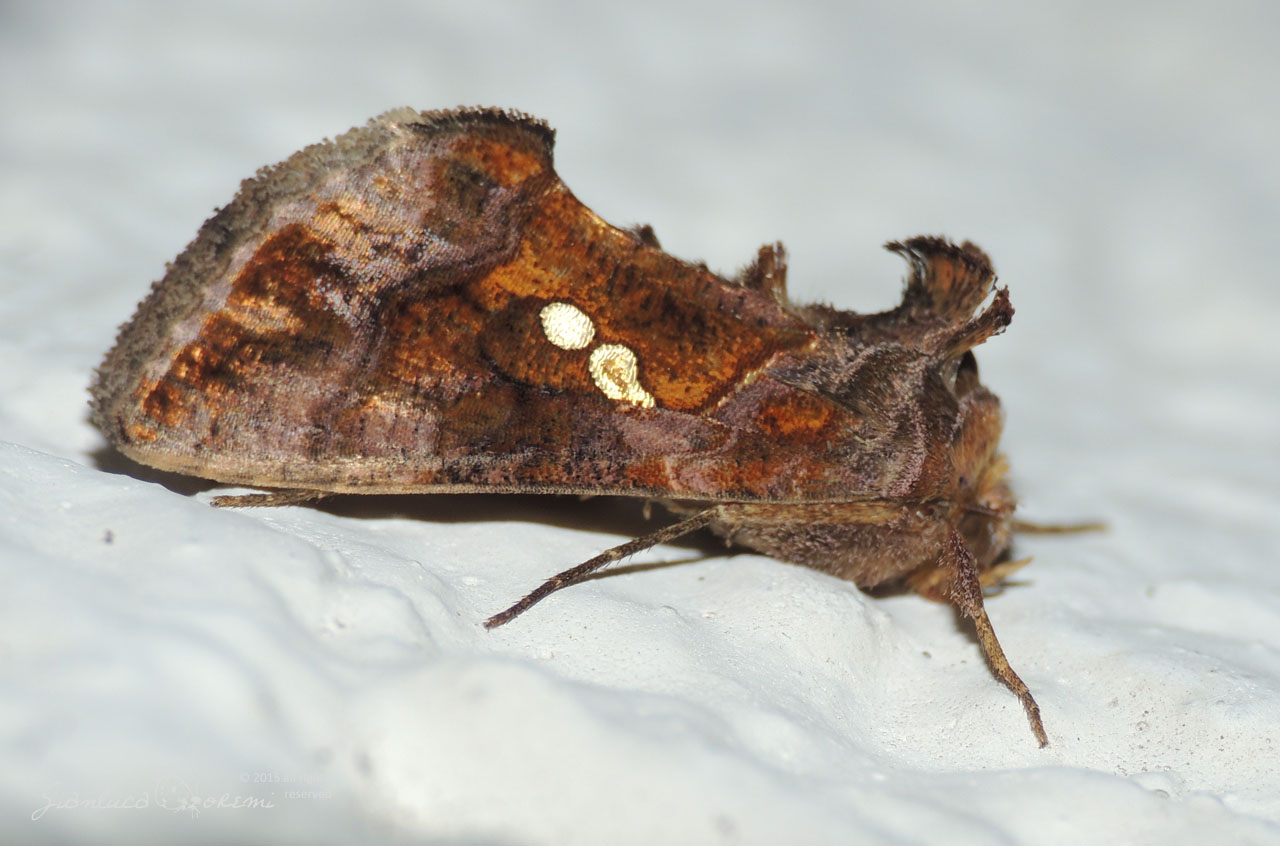
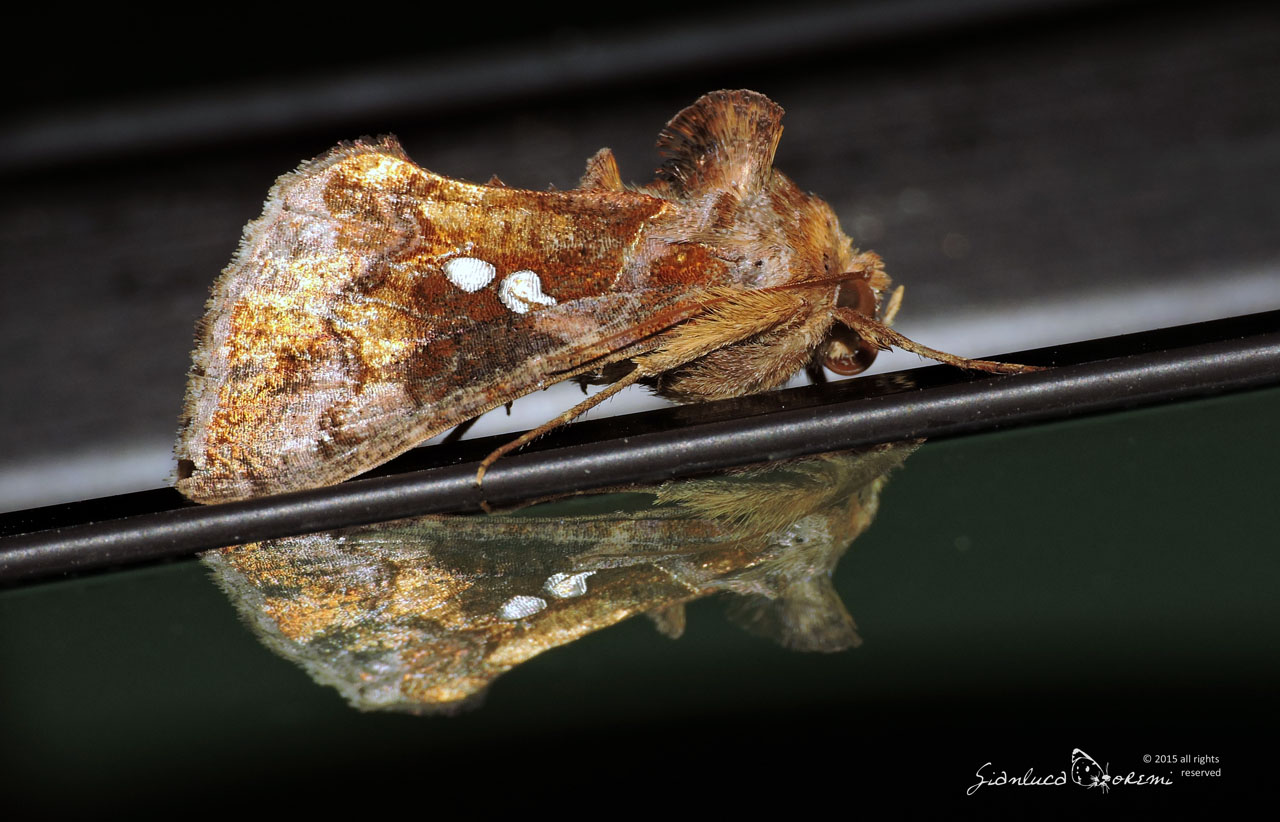
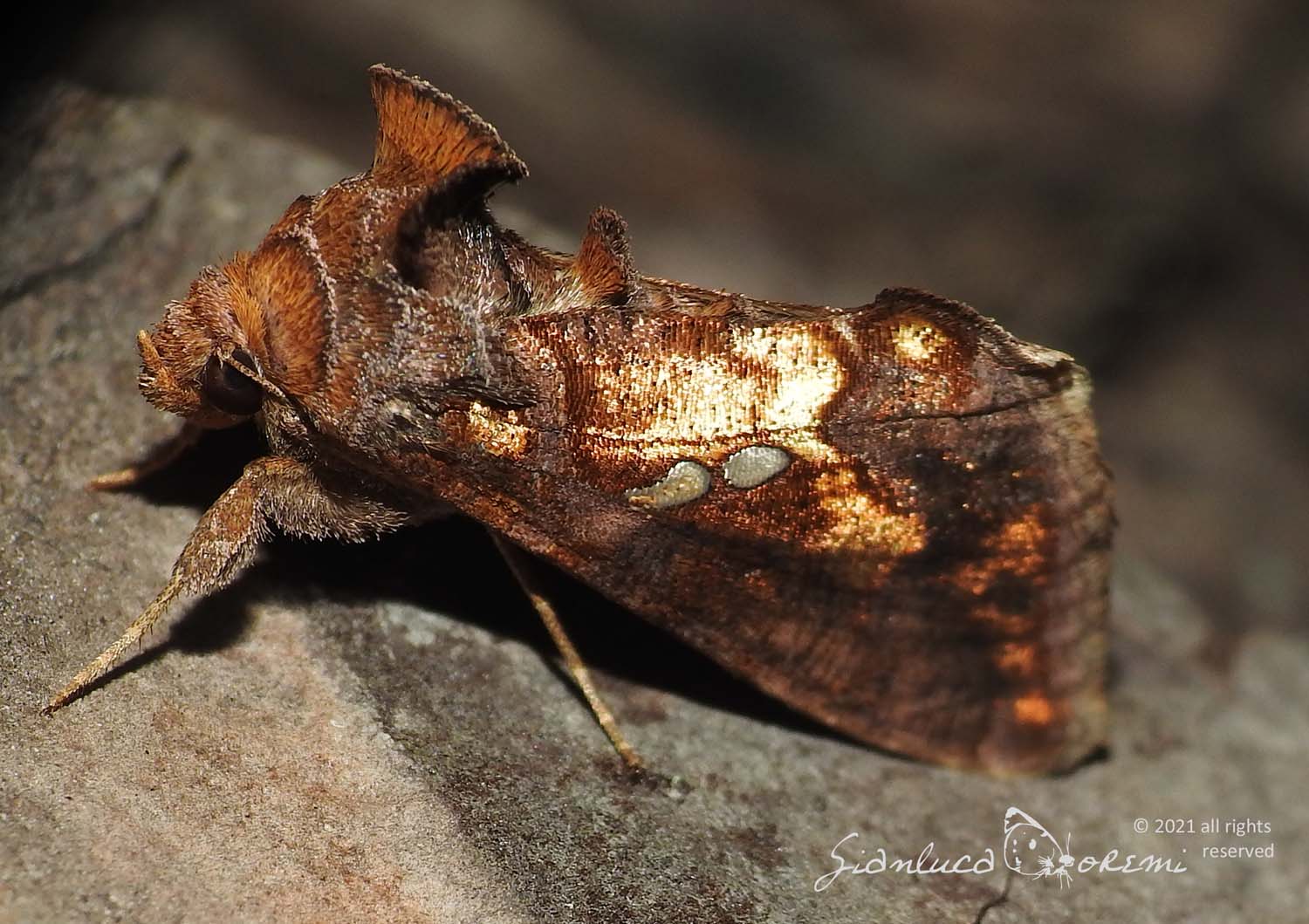
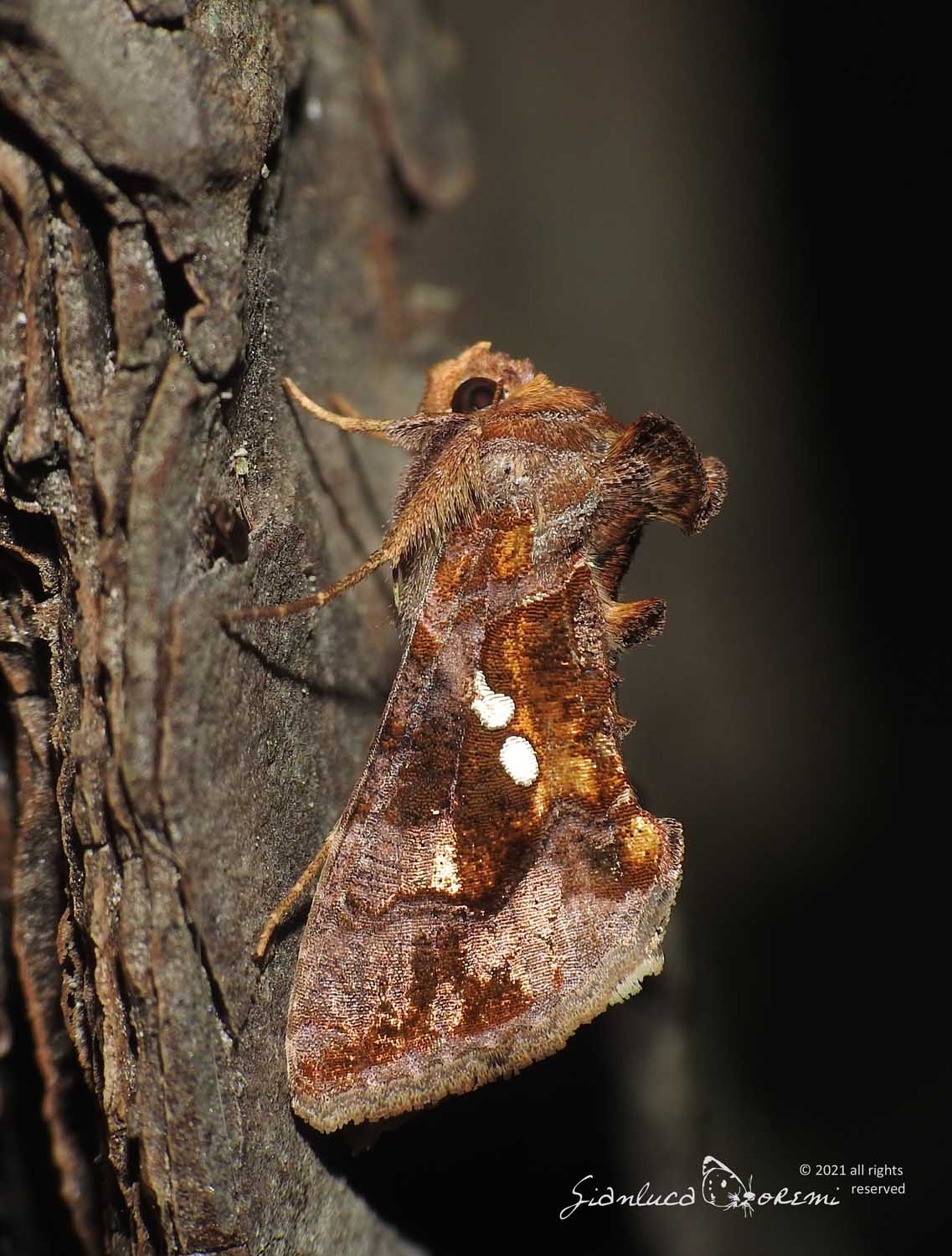
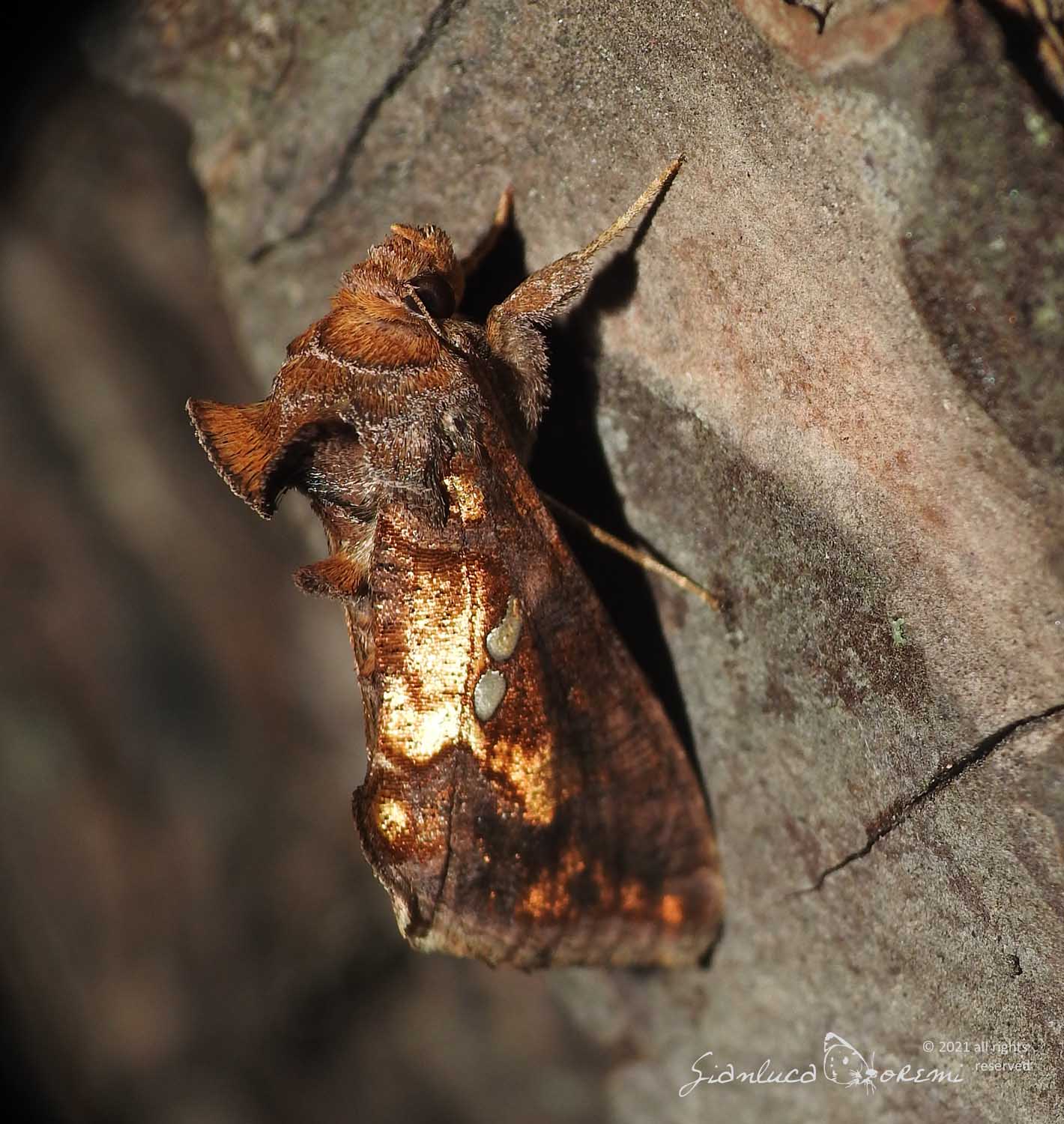

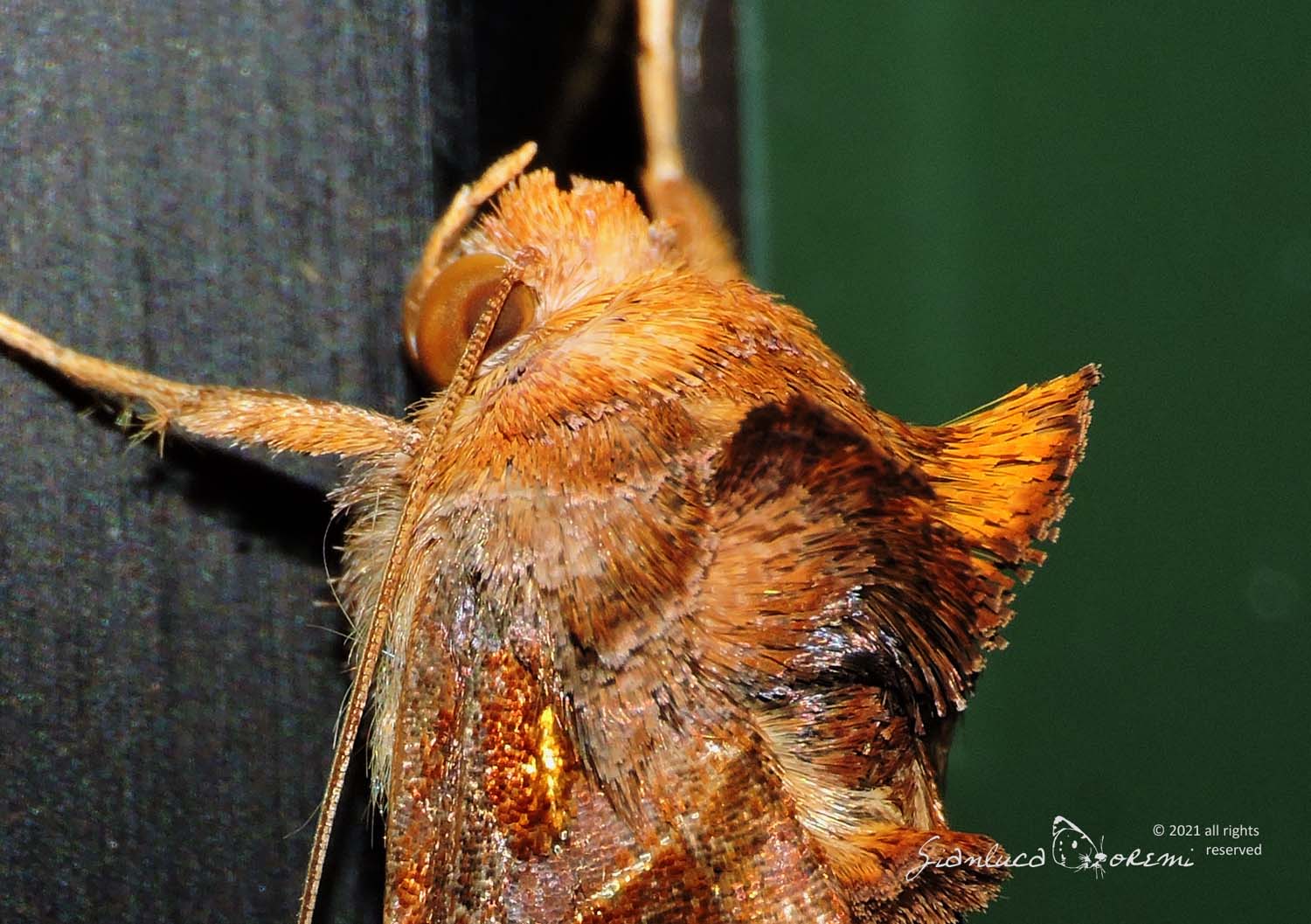
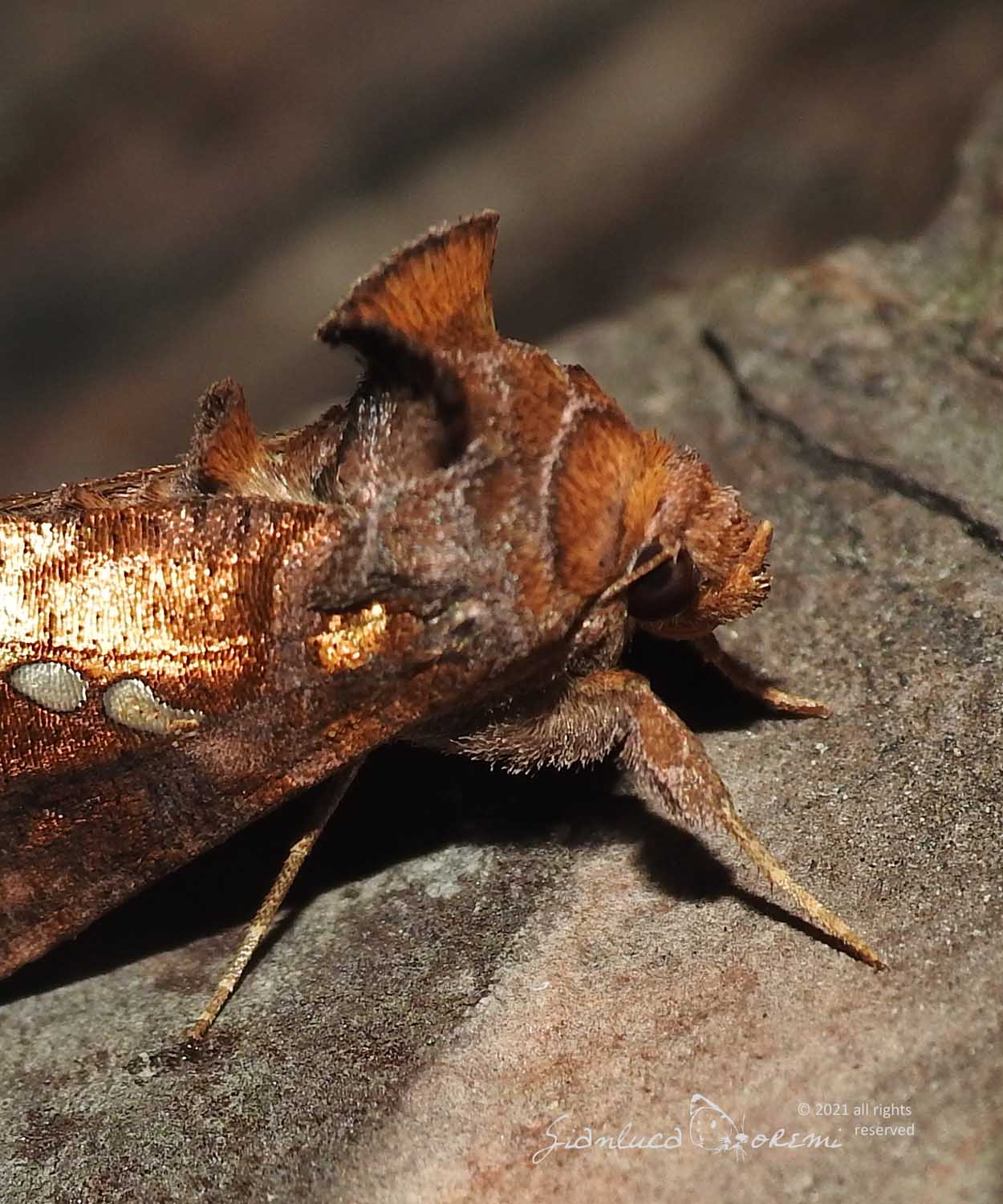
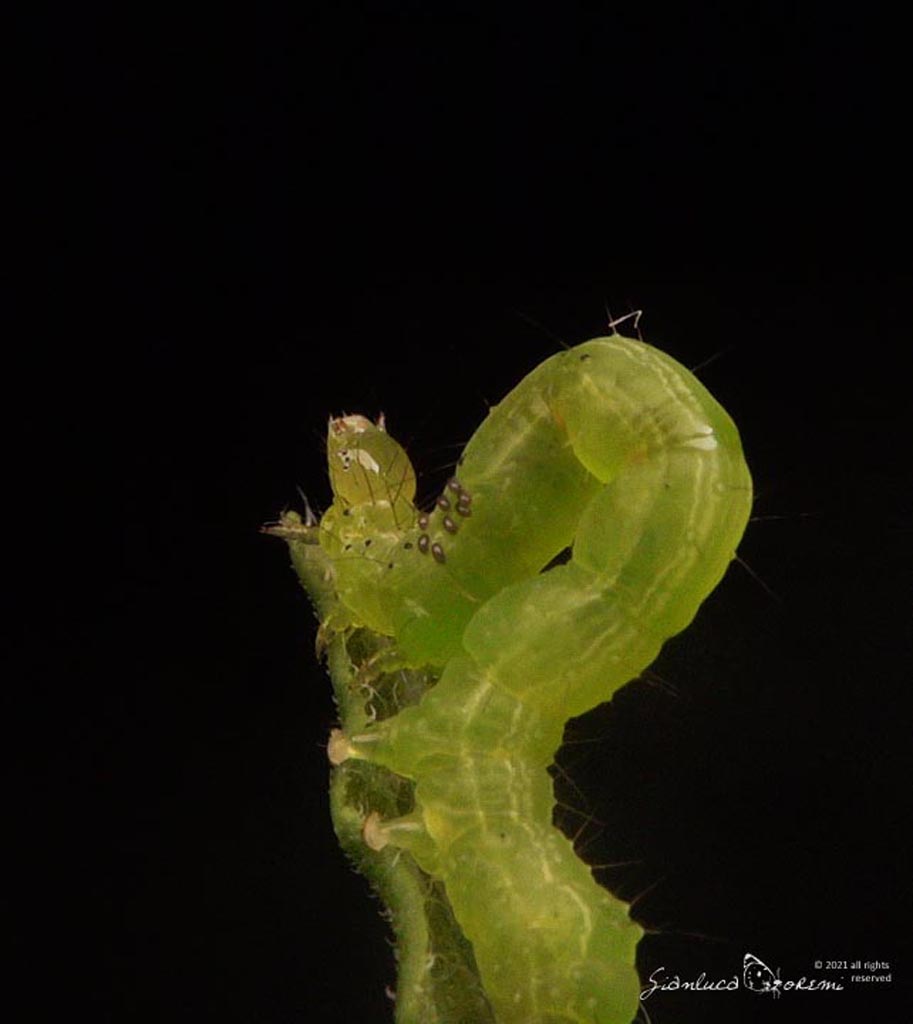
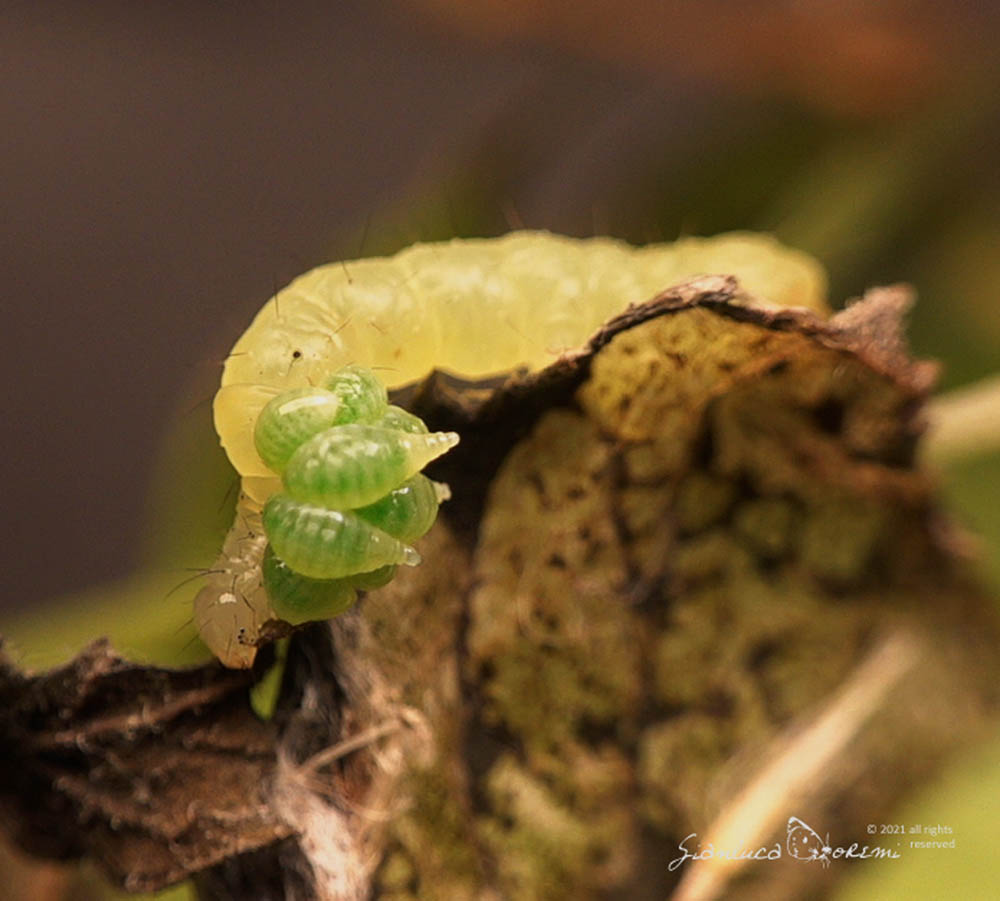

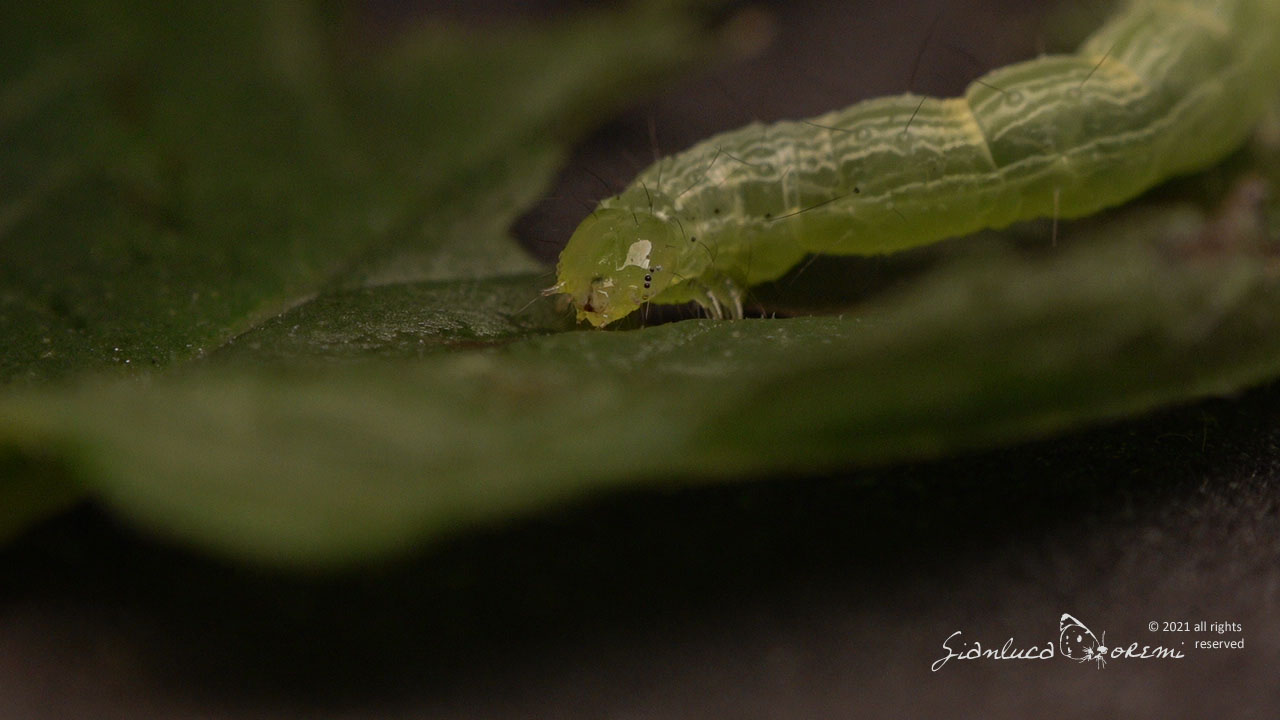
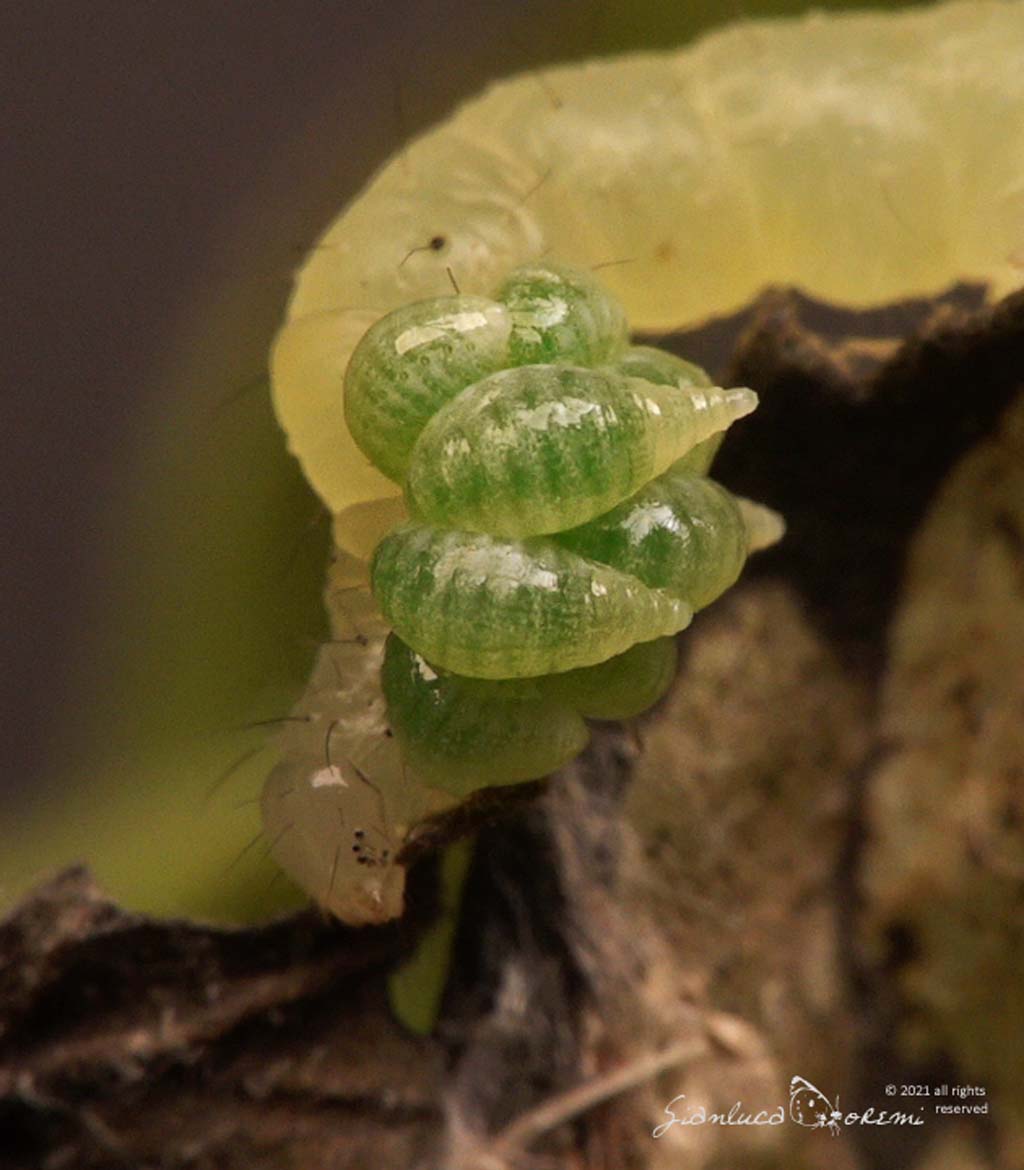
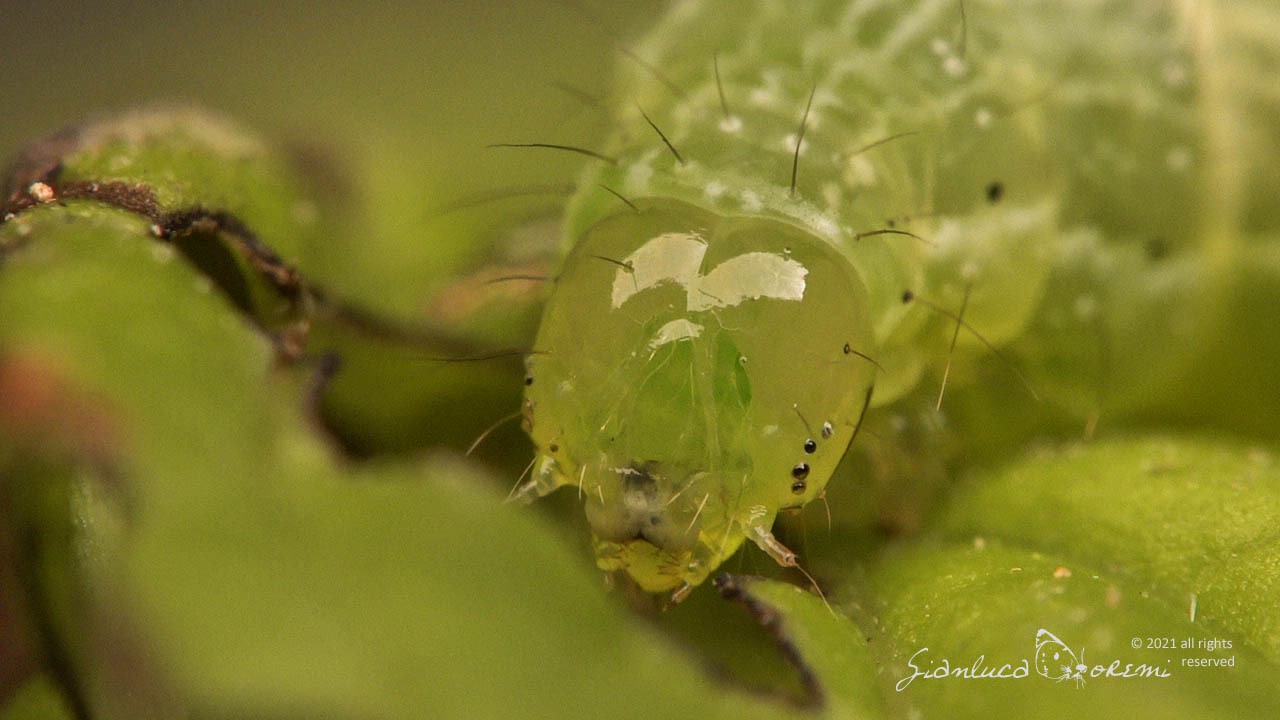

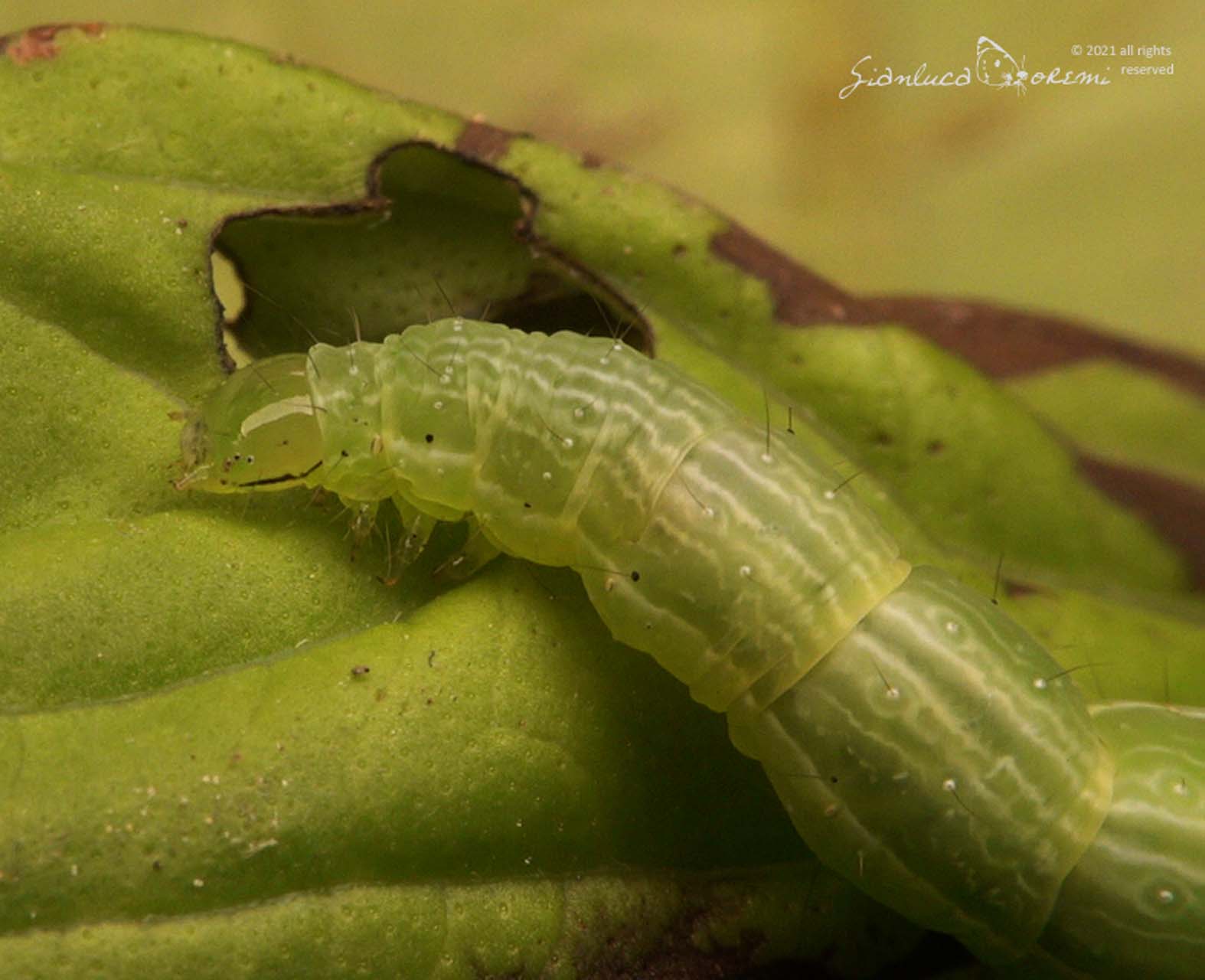



 EN
EN ITA
ITA
Social and publications